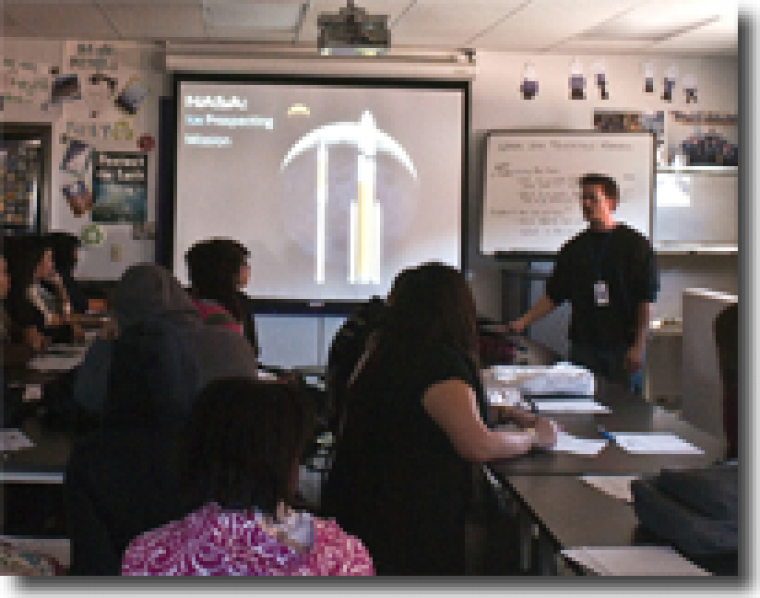Chris Pagliarulo

Chris Pagliarulo, co-sponsored by Molecular & Cellular Biology.
I am working with the Sunnyside High School Science program and FFA teacher DeeDee Amber to design, implement, and test NASA based curriculum that support the Arizona Science Standards for Freshman, Sophomores, and Juniors. We are incorporating several underutilized NASA developed educational materials including several NASA Engineering Design Challenges and a variety of project based curriculums in order to construct a semester long lunar ice prospecting challenge. All 115 of Mrs. Amber’s students are working toward designing, modeling, testing, and presenting various necessary components to support a long term mission to the moon to search for ice. The Freshman, Team Helo, will design and build greenhouse and other food production facilities needed to support 3-7 lunar base crew. The Sophomores, Team Artemis, are responsible for life support and energy, developing facilities that will both house and protect the future astronauts, as well as integrate and support the needs of the other two missions. The Juniors, Team Boomer, are the greydogs (lunar miners) charged with navigation, miner design, and raw material processing. The students will work in smaller teams to develop critical components of each mission. Because each component must work well as a system, all teams will need to work closely with other related groups and projects, creating ample pear collaboration and teaching opportunities both across classes and across grade levels. DeeDee and I feel weaving in the lunar mission storyline into the usual standard science curriculum will both improve student engagement and learning as well as permit integration of biology, math, and engineering in a more realistic way. At the end of the semester, mission teams will present their design proposals and budgets to “Congress” and a NASA Panel in the form of PowerPoint presentations and physical or CAD based models. Team members will be required to justify their design decisions, detailing how their structures or instruments support mission requirements, how their systems faired in basic testing, and how their systems and results compared to their competitors. Over the course of the semester, students will document their efforts, experiments, and activities on video. This will be edited into a variety of video podcasts to be posted on YouTube that will support (and likely entertain, if I know my kids) other students and teachers who are also interested in incorporating NASA based content into their classrooms.
Fall 2009 Update
The 2008-2009 Sunny Side NASA Mission produced several successful projects including the construction of three plant growth chambers, a bioreactor water treatment system and numerous student designed and presented science instructional modules. More importantly, all 115 students involved in the project engaged in difficult problem solving and presentation challenges related to biological and engineering science. Significant improvement in understanding and skill was reported by most students.
This year, the focus will be to encourage and support the use of these skills outside of the classroom, through competition in state and national FFA and science and engineering fairs. I will support several student team investigations related to sustainable technologies and natural resources (newly emphasized NASA priorities). Each student team will document the investigation process through both written data and note collection and video documentary production. The hope is to encourage greater participation in science competitions by all schools in the area. Currently in the Sunny Side School District, there are few resources available for students and teachers that directly support participation in science competitions. By documenting several "How-to" case studies illustrating the process and thinking behind successful student led science or engineering investigations, we hope to lower the barrier for the many other schools and teachers interested in getting involved, but that lack the time or resources necessary to start from scratch.

